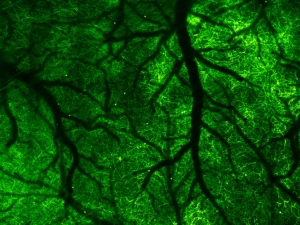

Research Bio
Na Ji is a professor in the Department of Physics and the Department of Neuroscience. Using concepts in physics, her lab develops next-generation optical microscopy methods for understanding the brain at higher resolution, greater depth, and faster time scales. Besides inventing methods that make an immediate impact on neuroscience, they also aim to extend the applications of our technologies to other living (and nonliving) systems.
Research Expertise and Interest
neuroscience, microscopy techniques, in vivo imaging, biophotonics, biophysics, adaptive optics, optics
In the News
High-speed microscope captures fleeting brain signals
Electrical and chemical signals flash through our brains constantly as we move through the world, but it would take a high-speed camera and a window into the brain to capture their fleeting paths. University of California, Berkeley, investigators have now built such a camera: a microscope that can image the brain of an alert mouse 1,000 times a second, recording for the first time the passage of millisecond electrical pulses through neurons.
Featured in the Media
Please note: The views and opinions expressed in these articles are those of the authors and do not necessarily reflect the official policy or positions of UC Berkeley.
March 24, 2020
A team of scientists at Berkeley's Helen Wills Neuroscience Institute has made a breakthrough in brain imaging with a camera that can image the brain of an alert mouse at a rate of 3,000 frames per second. The strategy will help doctors look for neural transmission problems in brain disorders. "In diseases, many things are happening, even before you can see neurons firing, like all the subthreshold events," says associate physics professor Na Ji, one of the team members. "We've never looked at how a disease will change with subthreshold input. Now, we have a handle to address that." Professor Ji says that one of their goals is to learn how neurons interact over large areas of the brain, so they can eventually locate diseased circuits.
Loading Class list ...

